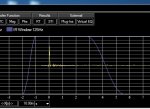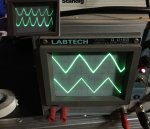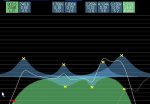Hi everybody,
Peter, glad to hear your arrayed 60 deg results...thx for ongoing settings etc.
I put building another pair of 60 deg to the side for the time being, after i realized that my shredded cones had to be due to failure to high-pass, and not the tighter than plan clearances I used....
Been trying to learn smaart, and finding a testing setup that's consistent and easy.
I did get the chance to take the DIY 60 (and a JTR 3TX) into the local sound reinforcement store, and have a brief A/B to the JBL 835p. Special thanks to the kind folks at Stagesound.....
Single boxes were set up sitting on a stacked pair of JBL 828p subs. All boxes crossed at 100hz. Not optimal for individual box optimization for sure, but like said...just a quick comparison.
The room was a good room for demoing IMO....
Anyway, I really wasn't prepared for how different the 835p and the DIY sounded....
The DIY sounded so much more forward, like there was a HF lift. But as i listened to to lower mids, I realized the same forward bias was there too. The DIY simply sounded much cleaner to me...alive....but the difference in tonality was great enough, that in comparison it almost seemed like the DIY was too hyped.
Time for a little disclosure....I'm still struggling with settings for the 60 degree. Peter, I tried the ones you gave, but either I'm doing something wrong or the settings aren't compatible with the hardware i'm using for processing (QSC PLD4.5 amp.) I find I have to back off the gain 3-4db to the HF and VHF drivers with your settings and also with any settings I independently attempt.
Interestingly, none of this is the case with the 90 degree version. The settings you gave work great, without needing to back down HF/VHF gain. I kinda wished I took the 90 deg in for comparison, and waited till I completely sort out the 60....
Anyway again......., as we played with bringing the 2 boxes in line tonally, is was like trying to rein in the DIY while putting the spurs to the 835. Both sounded pretty good meeting in the middle. But even then, the DIY still sounded cleaner. And it certainly sounded like it had a lot more room to breathe....
I've become addicted to the DIY's clarity, and don't care how long it takes to sort it out the tonal finesse...I can't live in the middle anymore lol
A think there was a consensus that the DIY sounds like an incredibly powerful studio monitor..
The 3TX fared very well too. Tonally, it set in between the DIY 60 and the JBL. Very similar to the middle ground found above, and this was with zero eq on it. (FWIW, the DIY 90 sits between the 3TX and DIY 60, and closer to the 60 deg...IMO)
Again, a clearly cleaner sound to my ears than the 835. And my gut says at least as loud if pushed....something we didn't really try...
I think having the compression driver handle as low a freq range as the do is the key to the clarity in both the DIY and the 3TX.
Basically what Peter has been saying from the gitgo ! :lol:






